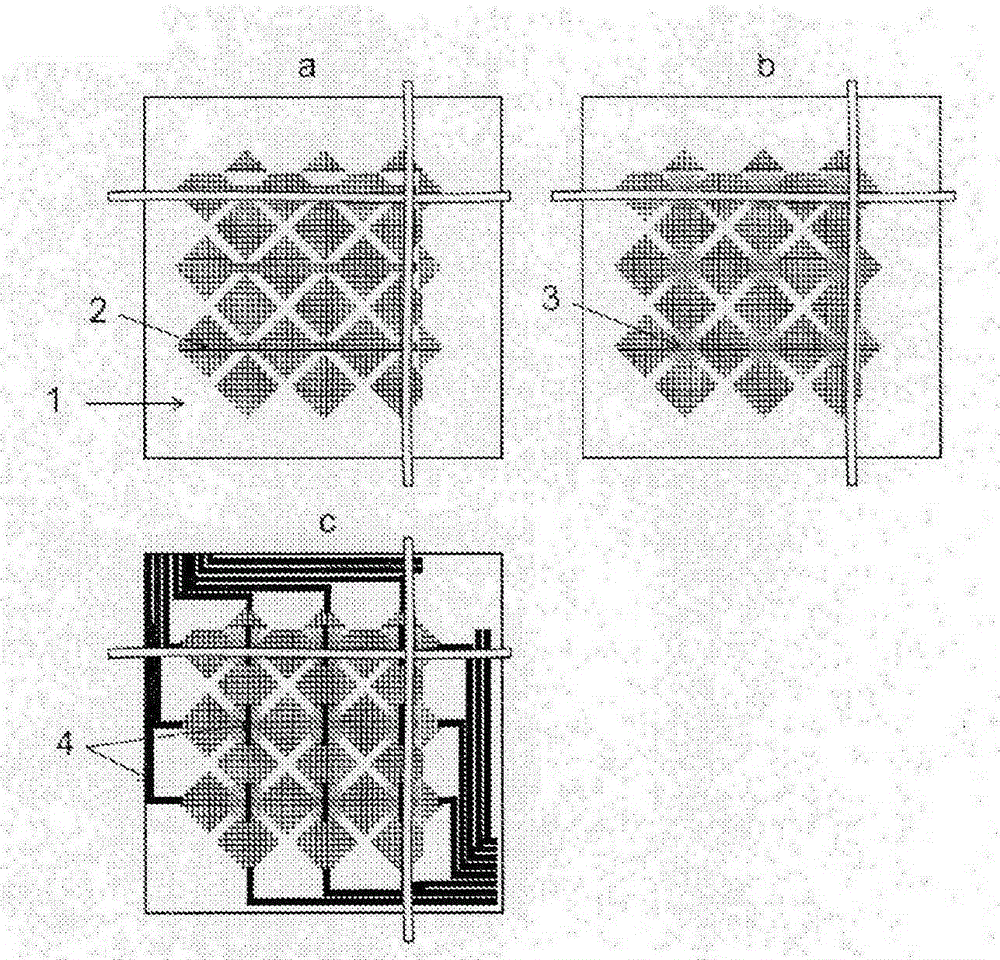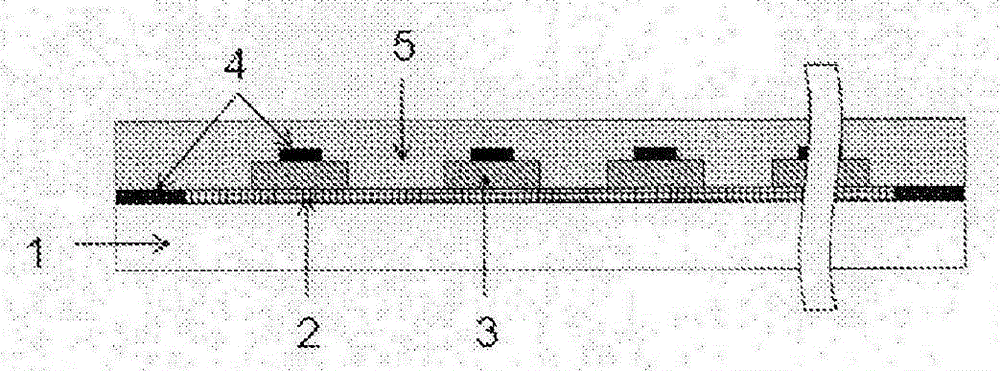Photosensitive resin composition, protection film or insulation film, touch panel and method for manufacturing same
A photosensitive resin and composition technology, applied in the field of photosensitive resin composition, can solve the problems of material deterioration, substrate adhesion, chemical resistance reduction, etc., and achieve high hardness, adhesion and chemical resistance without reduction , good storage stability
- Summary
- Abstract
- Description
- Claims
- Application Information
AI Technical Summary
Problems solved by technology
Method used
Image
Examples
Embodiment
[0187] Hereinafter, although an Example and a comparative example are given and this invention is demonstrated more concretely, this invention is not limited to these ranges. In addition, when using the abbreviation in the compound used, the name is shown below.
[0188] AcOH: acetic acid
[0189] AD-TMP: ditrimethylolpropane tetraacrylate (manufactured by Shin-Nakamura Chemical Industry Co., Ltd.)
[0190] Al-A: Aluminum chelate compound A (manufactured by Kawaken Fine Chemical Co., Ltd.; tris(acetylacetonato)aluminum(III))
[0191] BDG: Butyl diethylene glycol, diethylene glycol mono-n-butyl ether
[0192] BYK-333: Silicone-based surfactant (manufactured by Bick Chemical Japan Co., Ltd.)
[0193] DAA: diacetone alcohol
[0194] DMSO: Dimethylsulfoxide
[0195] DPHA: KAYARAD (registered trademark) DPHA (manufactured by Nippon Kayaku Co., Ltd.; dipentaerythritol hexaacrylate)
[0196] EtOH: ethanol
[0197] HCl: hydrochloric acid
[0198] HNO 3 : nitric acid
[0199]...
Synthetic example 1
[0232] Synthesis example 1 Synthesis of acrylic resin solution (A-01)
[0233] 0.821 g (1 mol%) of 2,2'-azobis(isobutyronitrile) and 34.64 g of PGMEA were added to the flask. Next, add 26.43g (30mol%) of benzyl methacrylate, 21.52g (50mol%) of methacrylic acid, tricyclo[5.2.1.0 2,6 ] Decane-8-yl ester 22.03g (20mol%), stirred at room temperature for a while, and after the inside of the flask was fully replaced with nitrogen by bubbling, heated and stirred at 70°C for 5 hours. Next, 14.22 g (20 mol%) of glycidyl methacrylate, 0.676 g (1 mol%) of dimethylbenzylamine, 0.186 g (0.3 mol%) of 4-methoxyphenol, and PGMEA70 were added to the resulting solution. .33 g, heated and stirred at 90° C. for 4 hours to obtain an acrylic resin solution (A-01). PGMEA was added to the obtained acrylic resin solution (A-01) so that the solid content concentration might be 35% by weight. The Mw of the acrylic resin was 30,000, the carboxylic acid equivalent was 480, and the double bond equivalen...
Synthetic example 10
[0250] Synthesis example 10 Synthesis of acrylic resin solution (A-10)
[0251] Using 2,2'-azobis(isobutyronitrile) 0.821g (1mol%), PGMEA35.27g, methacrylic acid 13.77g (32mol%), methacrylic acid tricyclo[5.2.1.0 2,6 ]decane-8-yl ester 41.86g (38mol%), styrene 15.62g (30mol%), glycidyl methacrylate 1.42g (2mol%), dimethyl benzylamine 0.676g (1mol%), 0.186 g (0.3 mol%) of 4-methoxyphenol and 71.61 g of PGMEA were superposed|polymerized similarly to the synthesis example 1, and the acrylic resin solution (A-10) was obtained. PGMEA was added to the obtained acrylic resin solution (A-10) so that the solid content concentration would be 35% by weight. The Mw of the acrylic resin was 13,000, the carboxylic acid equivalent was 490, and the double bond equivalent was 6,580.
[0252] Synthesis Example 11 Synthesis of Acrylic Resin Solution (A-11)
[0253] 0.821 g (1 mol%) of 2,2'-azobis(isobutyronitrile) and 27.36 g of PGMEA were added to the flask. Next, add methacrylic acid 21.52...
PUM
| Property | Measurement | Unit |
|---|---|---|
| double bond equivalent | aaaaa | aaaaa |
| particle diameter | aaaaa | aaaaa |
| double bond equivalent | aaaaa | aaaaa |
Abstract
Description
Claims
Application Information
 Login to View More
Login to View More - R&D
- Intellectual Property
- Life Sciences
- Materials
- Tech Scout
- Unparalleled Data Quality
- Higher Quality Content
- 60% Fewer Hallucinations
Browse by: Latest US Patents, China's latest patents, Technical Efficacy Thesaurus, Application Domain, Technology Topic, Popular Technical Reports.
© 2025 PatSnap. All rights reserved.Legal|Privacy policy|Modern Slavery Act Transparency Statement|Sitemap|About US| Contact US: help@patsnap.com



